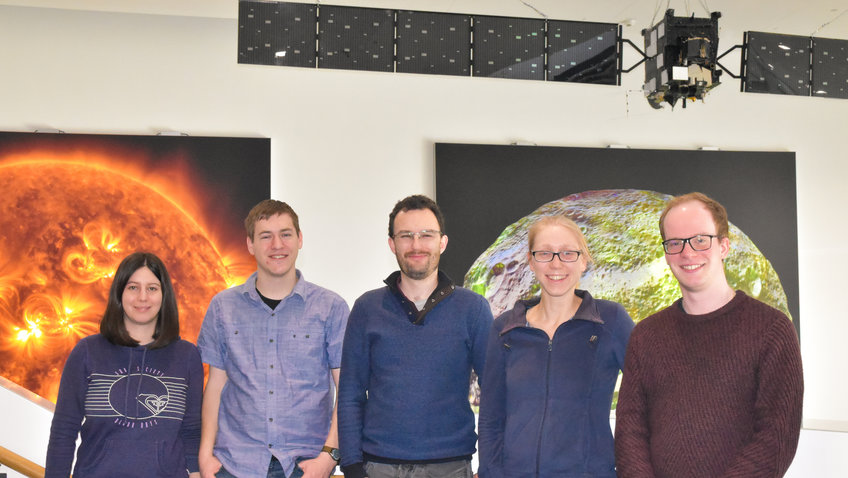
Stellar Ages and Galactic Evolution (SAGE)
ERC Starting Grant and Max Planck Independent Research Group
09/2013-09/2020
New Group at HITS: Theory and Observations of Stars
"We are a way for the universe to know itself. Some part of our being knows this is where we came from. We long to return. And we can, because the cosmos is also within us. We're made of star stuff."
Scientific Outline
The Milky Way is a giant spiral galaxy, which has evolved to its current shape over billions of years. Up to now, the formation history of the Milky Way is not fully understood. Several processes are likely to have contributed to its formation, i.e. in-situ star formation, in-fall of stars from satellite galaxies, galaxy mergers, and dynamical processes like the diffusion and radial migration of stars. The dynamical and chemical properties of the stars observable to date still bear the signatures of these different processes.
Age is a fundamental property of stars. It is an essential tool to understand many diverse phenomena in astrophysics, including the evolution of the Galaxy, the stars within, and their planetary systems. Unfortunately, age is a difficult property to determine as there is no observable that is sensitive to age and age only. Current techniques yield an uncertainty no better than 30-40%.
In the SAGE research group we study oscillating main-sequence stars, subgiants and red giants with the aim to infer their internal structures and their ages to unprecedented accuracy and to use these stellar ages, together with stellar distances, velocities and chemical compositions to determine the structure of the Milky Way.
For this research we make use of (among others) high-precision photometric data from the CoRoT and Kepler space missions, spectroscopic data from APOGEE and Gaia-ESO surveys and state-of-the-art stellar models computed using the Mesa, Garstec and Monash stellar evolution codes.
Asteroseismology
It was once said that "at first sight it would seem that the deep interior of the sun and stars is less accessible to scientific investigation than any other region of the universe" (Sir Arthur Eddington, 1926). Now, through modern mathematical techniques and high quality data, it has become possible to probe and study the internal stellar structure directly through global stellar oscillations: a method known as asteroseismology.

Asteroseismology uses similar techniques to seismology carried out on Earth to study the structure of stars. The properties of waves are used to trace the internal conditions. Oscillations that impact upon the whole star reveal information that is hidden by the opaque surface. See Figure 1 for an artist's impression of oscillations in a star. Asteroseismology offers the opportunity to obtain highly sensitive observables which can be compared to our stellar models and constrain stellar ages. By improving upon the uncertainty in the stellar ages there are several questions we can help answer:
- How long do evolutionary phases last for stars with different initial masses and compositions?
- What is the chemical evolution of our Galaxy?
- Do the properties of stars in different directions of the galaxy change?
- What can we learn from the study of other stars about the behaviour of the Sun at different epochs in the past and in the future? Is the Sun a normal star or is the Sun special?
- How old are planets orbiting other stars and how do planetary systems evolve?
- How do stellar magnetic activity and rotation change with age?
About Us
The SAGE research group is funded by the European Research Council under the European Community's Seventh Framework Programme (FP7/2007-2013) / ERC grant agreement no 338251 (Stellar Ages) and by the Max Planck Society through an independent Max Planck research group.
The SAGE research group is an international node of the Stellar Astrophysics Centre
Dr. Saskia Hekker is a fellow of the Elisabeth-Schiemann-Kolleg
